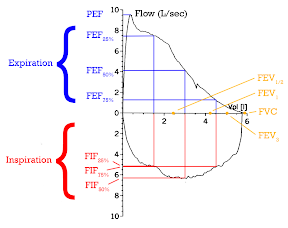Small airway involvement is present in all stages of asthmatic disease despite been referred to as 'silent zone'
 This review provides an update on the importance of the peripheral, small airways in asthma. As the small airways account for less than 10% of total airway resistance, thus having little impact on standard lung function measures such as forced expiratory volume and peak flow, they have been referred to as the 'silent zone'.
This review provides an update on the importance of the peripheral, small airways in asthma. As the small airways account for less than 10% of total airway resistance, thus having little impact on standard lung function measures such as forced expiratory volume and peak flow, they have been referred to as the 'silent zone'.Small airway involvement is present in all stages of asthmatic disease, and is related to important clinical phenotypes such:
- nocturnal asthma
- exercise-induced asthma
- difficult-to-control asthma
- patients with the risk of repeated asthma exacerbations
Uncontrolled small airway inflammation is related to airway remodeling and progression of the disease, with a more rapid decline in the lung function.
In order to control the disease, we need to target small airway inflammation, which is difficult to reach by standard inhaled medications. A better understanding of the role small airways are playing in asthma shows that the 'silent zone' is not silent at all.
References:
The role of small airway disease in asthma. Bjermer L. Curr Opin Pulm Med. 2014 Jan;20(1):23-30. doi: 10.1097/MCP.0000000000000018.
http://www.ncbi.nlm.nih.gov/pubmed/24296687
Image source: Spirometry, from Wikipedia, the free encyclopedia, GNU Free Documentation License.